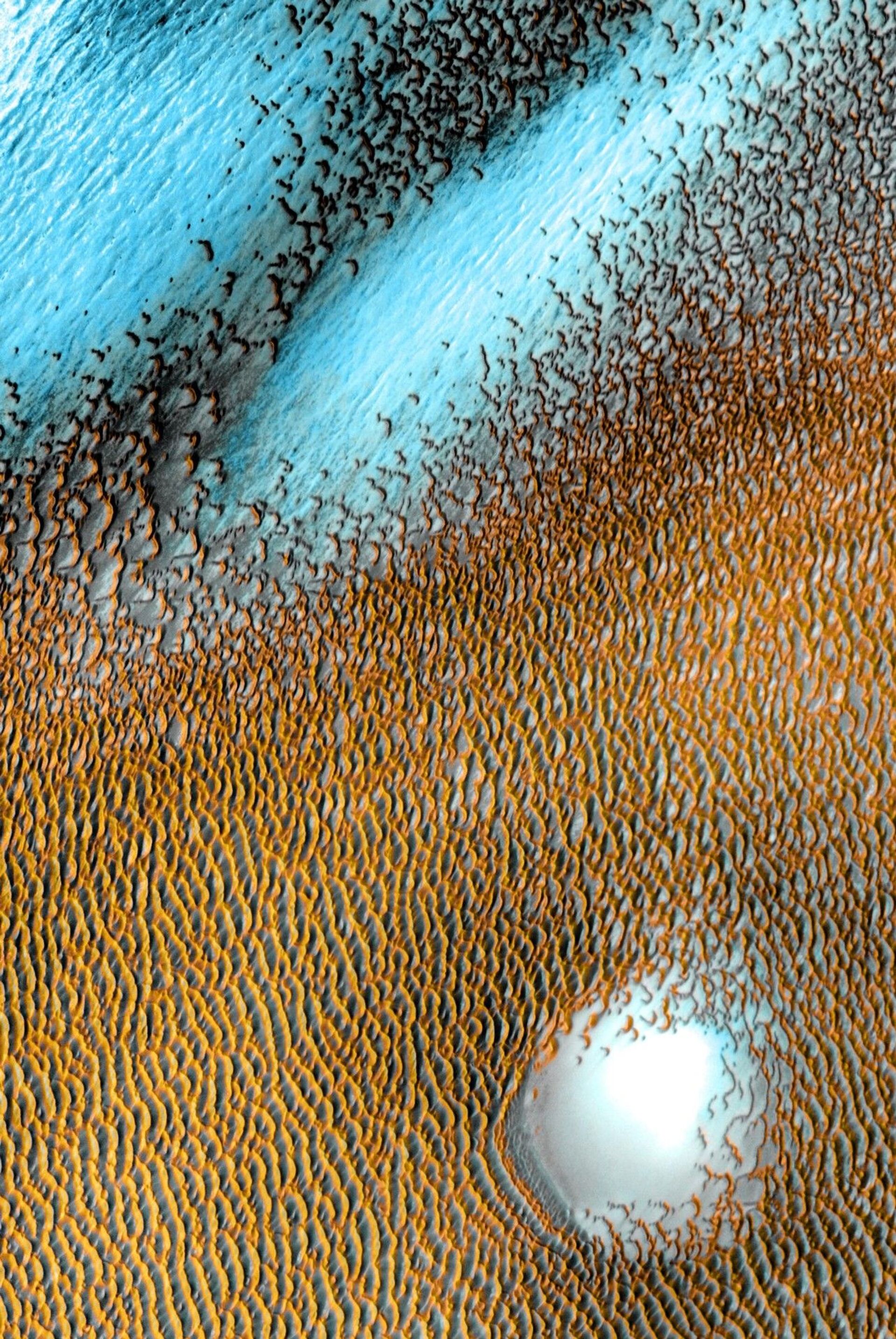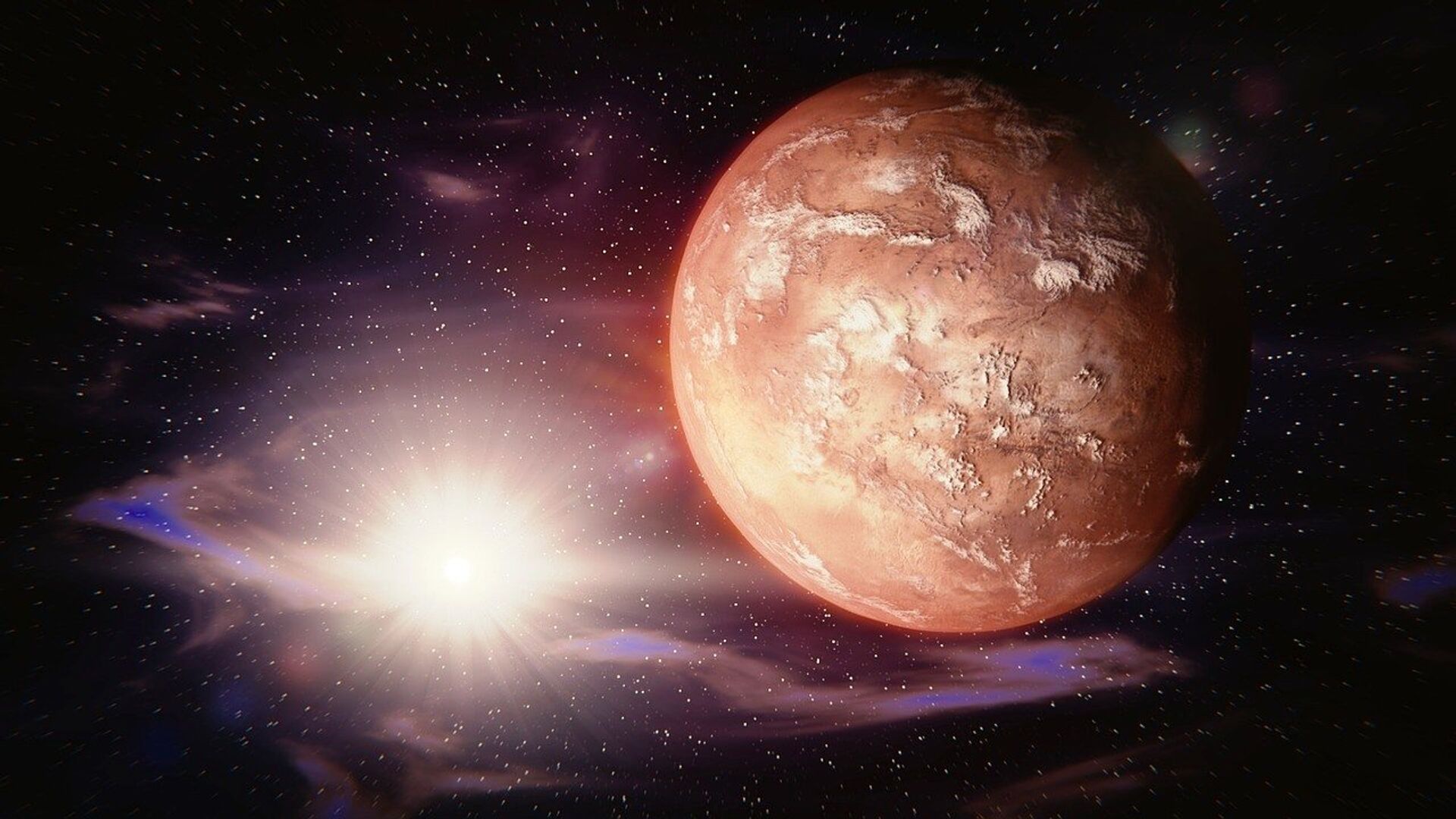The US’ National Aeronautics and Space Administration (NASA) released a stunning image on Monday that offered a spectacular view of the sand dunes and northern polar caps on the distant planet.
The release, which was done in an effort to celebrate the 20th anniversary of the Mars Odyssey orbiter, is a false-color image, meaning the colors used are representative of the temperature detected in the area. As such, the planet’s polar caps are represented with crystal blue tints, whereas hues of yellow and orange are used to depict the Martian dunes.

The image itself is composed of several images snapped by the orbiter’s infrared camera, the Thermal Emission Imaging System instrument, between December 2002 and November 2004, and captures an area about 19 miles wide.
NASA officials indicated in their Monday release that the pictured area on Mars is located at approximately 80.3 degrees north latitude, 172.1 degrees east longitude.
Over the last two decades, the Odyssey has done much more than simply offering landscape compositions. In fact, since the spacecraft began orbiting Mars on October 24, 2001, Odyssey has managed to help scientists uncover water ice elements, as well as analyzed the planet’s radiation environment in its low orbit, according to the US space agency.



